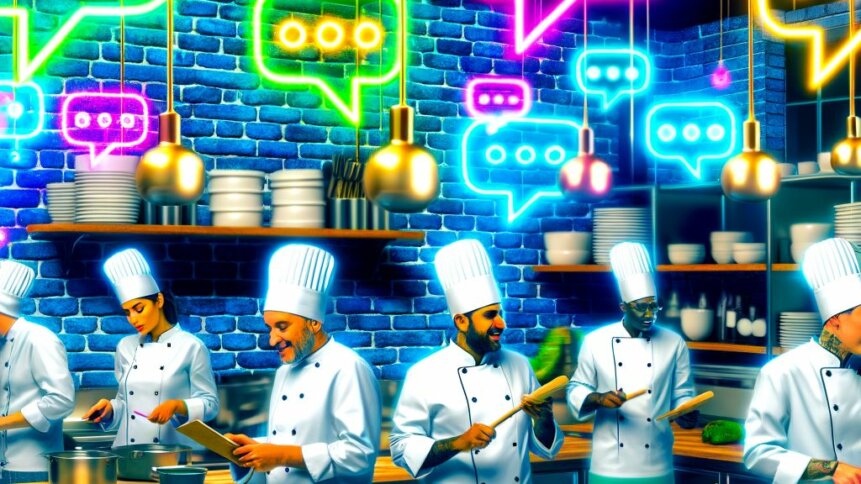How AI is transforming the restaurant industry

|
Getting your Trinity Audio player ready...
|
Just because introducing AI into the restaurant industry paves the way for greater automation doesn’t mean that every kitchen is going to be run by robots (although some might be in the future, and a tiny handful are already). “At the end of the day, it’s a people business,” Zhong Xu – CEO and co-founder of Deliverect, a provider of food ordering software – told TechHQ. What’s more universal is the need for food outlets to build a presence online and convert that audience into sales, and that’s a big part of how AI is transforming the restaurant industry.
Xu has been helping restaurants to go digital since a young age and that journey led him to co-found Deliverect. The Belgium-based tech firm’s software platform not only abstracts away the complexity of receiving food orders online and via social media, it gives restaurant owners the opportunity to personalize their offerings to customers, and brings a wealth of analytics.

Deliverect CEO and co-founder, Zhong Xu.
Today, the company has offices in major cities around the world and has helped clients process 500 million meal orders in five years. Food ordering and fulfilment software enables restaurants to become omni-channel operations, much like how retail platforms have transformed brick-and-mortar stores into more versatile digital shopping hubs.
Digital tools support customers who want to dine in, those who’d like to pick up their orders at the restaurant, as well as integrating well-known delivery partners such as Uber Eats, Deliveroo, DoorDash, and Hungry Panda – to give just a few examples.
Writing social media posts and taking orders
Highlighting how AI is transforming the restaurant industry, algorithms help users to prepare their social media posts and launch promotions around specific events. Menus can be changed dynamically – for example, to reflect that a major soccer match or a music concert is taking place near one of the outlets in a medium to large chain of restaurants.
Deliverect is a Meta partner, which enables the food ordering software provider to integrate its solutions with massive social networks such as Instagram and WhatsApp. Consumers can browse their Instagram feed and order directly from an Instagram story that appeals to them – a feature that has a very high conversion rate of clicks to food sales, according to Xu.
Menus can also be adjusted on the fly. If a menu item is going out of stock, it can be snoozed until more food supplies arrive – avoiding having to deal with disappointed diners and enabling a better customer experience. The food ordering software gives restaurants the opportunity to tailor their offerings to different audiences and run multiple menus at the same time – naturally, only showing one to each of the segments.
On TechHQ, we’ve written about how AI enables firms to create a digital personal shopper for each of their customers on a huge scale. And this strategy plays out in the restaurant industry too. Food outlets have the opportunity to remember their customers’ favourite orders and make recommendations based on those analytics.
AI is transforming the restaurant industry by streamlining menu adjustments at busy times – for example, when fewer staff are on shift, the number of options can be reduced. Complicated menu items can be paused at busy times. Alternatively, pricing can be adjusted dynamically. Xu points out that raising prices during busy times might mean that you lose a few potential orders, but it’s an opportunity for food outlets to capitalize on their popularity.
Data insights can be a game changer for restaurant owners. Digital tools can quickly highlight which menu items are the most profitable and put them in front of more eyeballs. Conversely, analytics help chefs to identify which meals need to be revised or dropped from the menu.
An operational helping hand on wheels.
Describing the benefits of these various operational helping hands begin to show how AI is transforming the restaurant industry. And being able to digitalize and appeal to the tastes of a new online audience without needing any specialized tech skills has helped businesses to survive.
AI has also meant that software providers such as Deliverect, which typically market themselves to mid-size and larger restaurant chains, can support smaller customers too – by integrating the latest automation tools for onboarding and fielding support calls.
Returning to the topic of robot kitchens, it could be something that will catch on if it’s made part of the show – restaurant dining is experience-based, after all. However, the design would need to be significantly more entertaining than a giant vending machine to tempt this author to the table.








